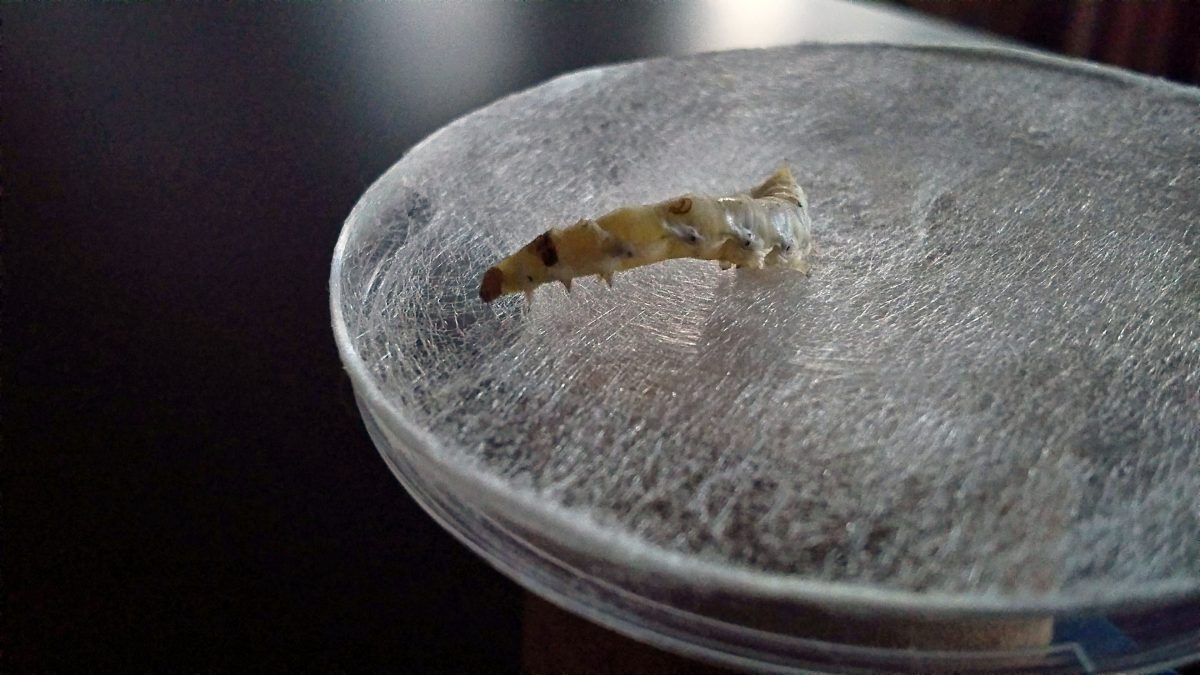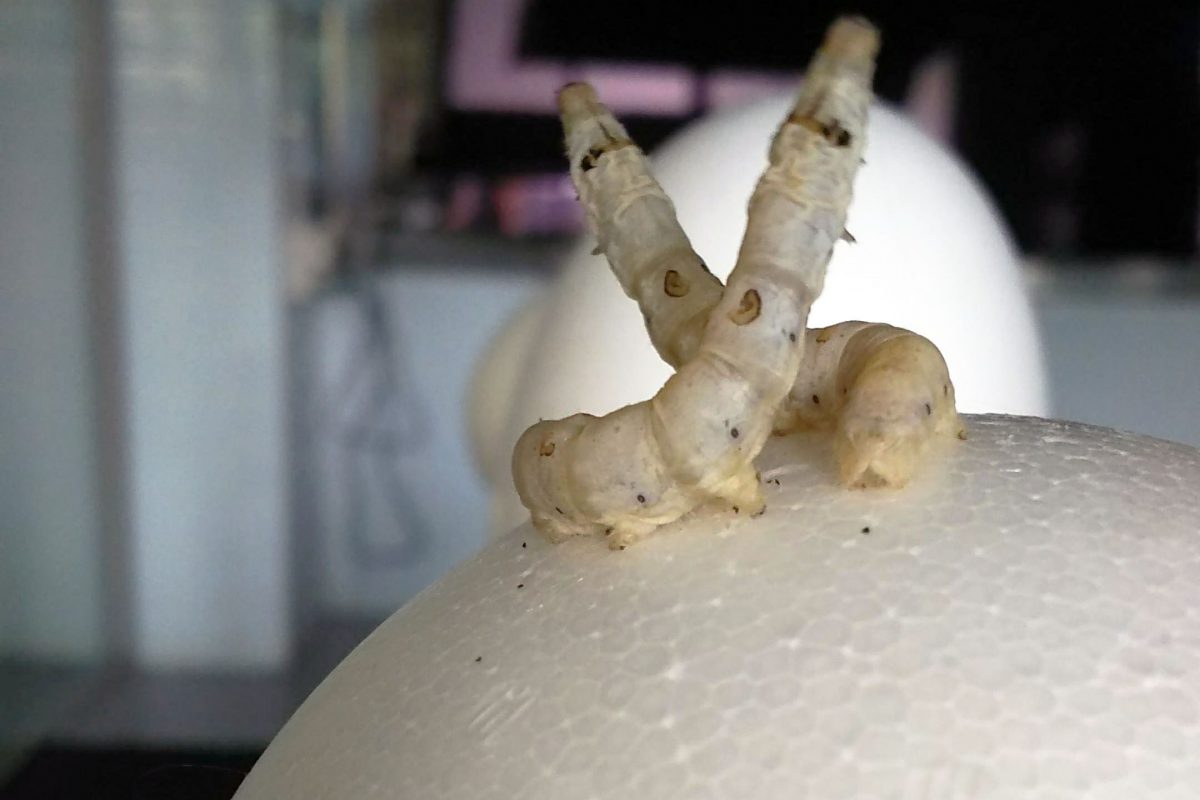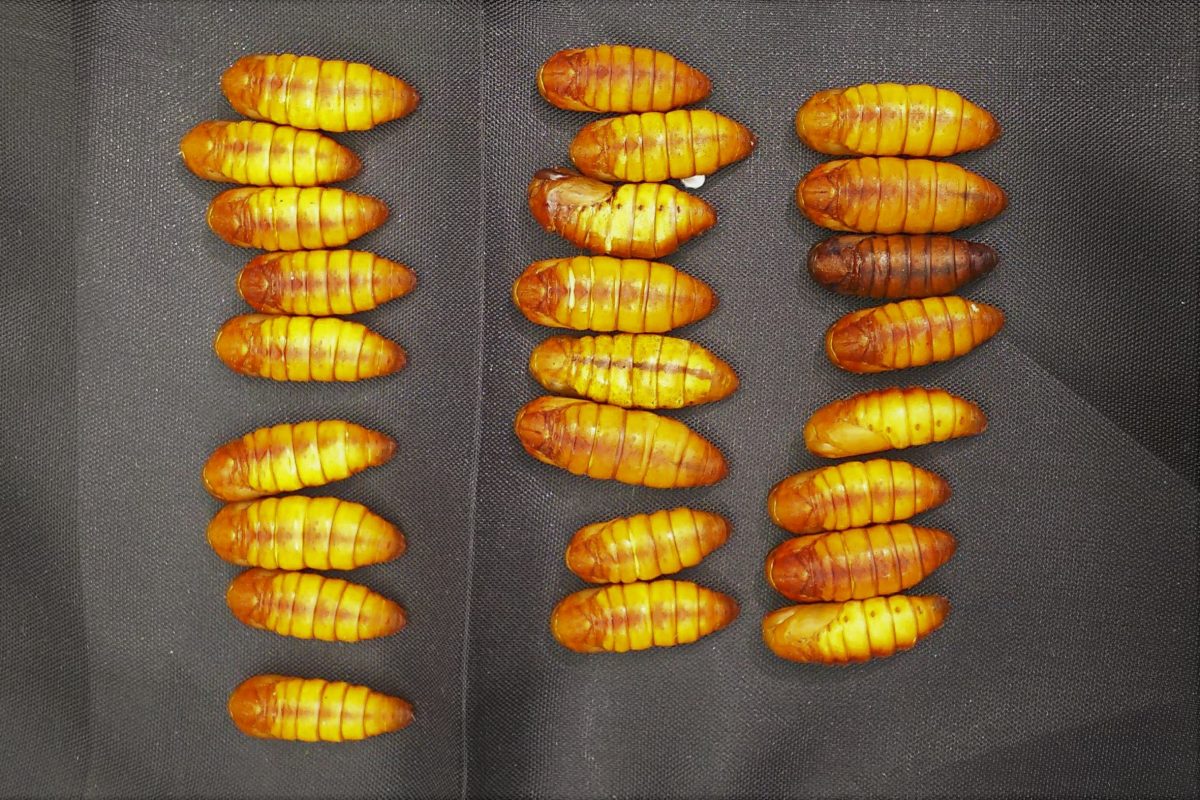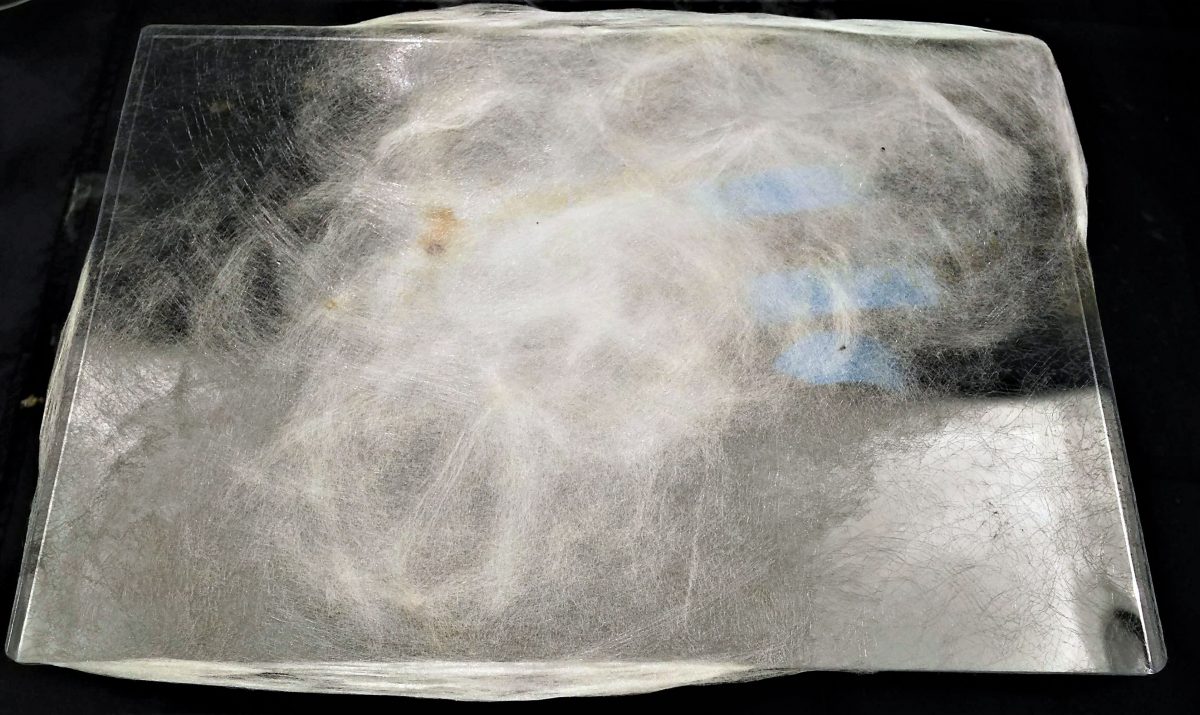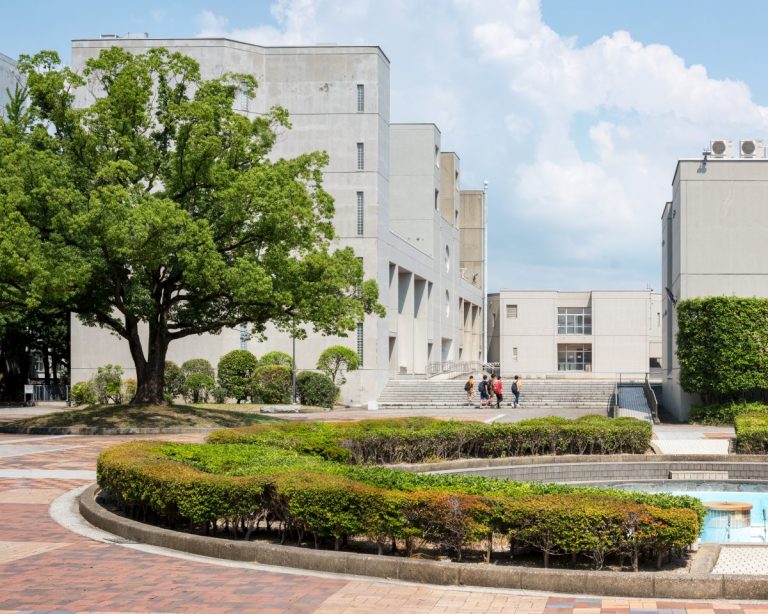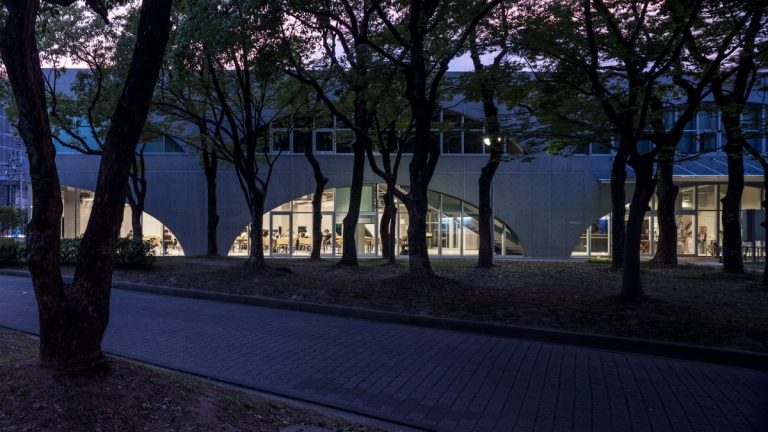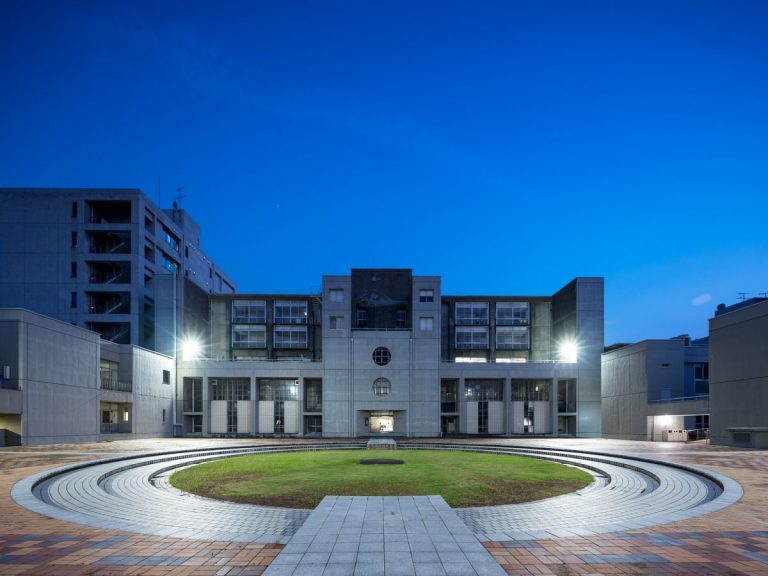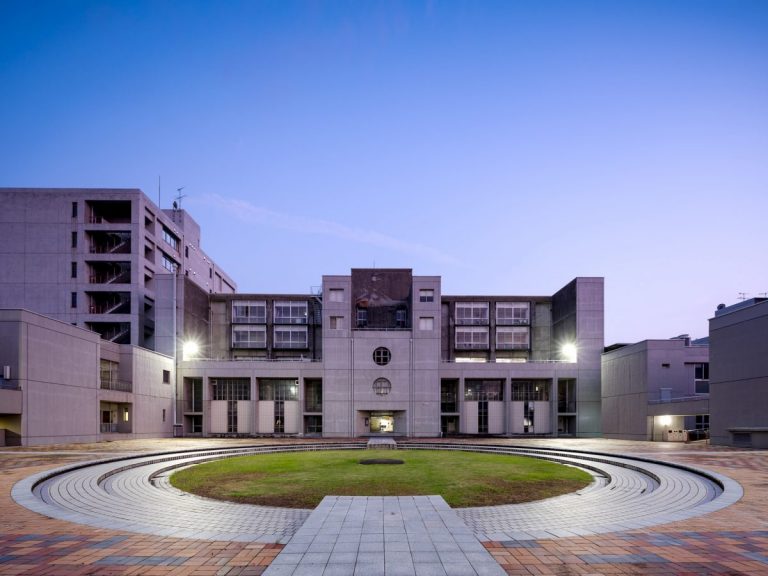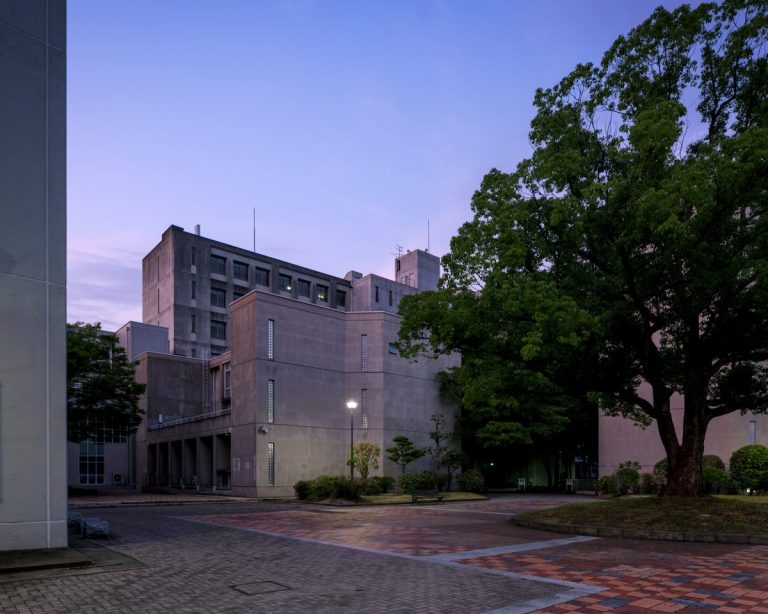BioLab, Silkworm Planar Spinning Experiment
June1st to 28th, 2019
Kyushu University, Faculty of Design, BioLab, started in 2019. It is currently working on “developing a method for next-generation design education (creativity education)”. Also, engaging in research activities with various researchers both from within and outside of the university to gain multiple perspectives surrounding life and intelligence, such as the aesthetics of life, artificial intelligence, bio-art, artificial life, and DIY bio.
Currently, we are working with researchers at Kyushu University Faculty of Agriculture, experimenting using silkworm to spun yarn. The experiment explores the possibility of design that uses silkworm products in the form of thread, and membrane that was formed through a unique molding process.
About BioLab
BioLab is equipped with devices for analyzing genes and images to explore the potential of biotechnology, which is rapidly becoming popular, from a design perspective. The lab seeks to pioneer new design research areas that go beyond merely finding and solving problems. For example, new possibilities and values can be explored through practicing design based on mimicking functions and structure of living things. Also, art can utilize living things as a medium for expression. With this new areas of research emerging, new aesthetic and ethic questions may arise. The lab needs to investigate appropriate ways to respond to these issues.
For this event, we will introduce the silkworm experiment conducted by Terumi Ikenaga, a PhD student at the Faculty of Agriculture, in the BioLab.
Silkworms spend their pupal stage, during which they change from a larva into an adult, in a cocoon. If the environment can be controlled during cocoon formation, then it may be possible to mold a planar non-woven fabric or 3D object.
In the first stage of this experiment, about 1 to 15 silkworms were released onto a circular plane, a rectangular plane, and a sphere. We want to investigate environmental conditions and silkworm behavior.
What was observed in the experiment
・On flat surfaces regardless of the shape, the thread was spun at the edge, the border of the surface [1].
・The location where the yarn was spun often concentrated in a particular area on the rectangular plane, whereas it was spun more evenly on the circular plane.
・The silkworms could move in the upper half of the sphere (up to the diameter of the sphere), but not in the lower half.
・If the edge slope was 20 degrees. They made a cocoon.
・If the edge height was 1.8 cm, they made a cocoon, but if it was 0.9 cm, they spun the thread on the plane. [2]
The silk membrane made in the experiment feels like Japanese paper with the natural texture of the silk thread. Usually, the cocoon includes the fuzz on the outermost and innermost layer of the cocoon as structural support. It will be removed when the cocoon is reel into thread. However, for the silk membrane, the fuzz is fused into the membrane. Also, the silkworm produces a yarn that comes in various colours, natural yellow, pink, and pale yellow-green colors.
In the conventional method, it is necessary to kill the pupa inside the cocoon to make the thread, but with planar spinning, the pupa can emerge as a silkworm moth.
Going forward, we will look into the fusion of the planar silk membrane made in this experiment with nanocellulose to expand the range of application.
There were cases of silk yarn combined with different materials during the weaving stage, but they have not yet been fused at the molecular stage. We hope to examine what sorts of new materials can be created through combinations made possible by recent research advancements. We will continue this research in hopes of producing materials that contain the various benefits of nanocellulose and silk filaments.
[References]
[1] N. Oxman, J. Laucks, M. Kayser, J. Duro-Royo, C. Gonzales-Uribe. (2014). Silk Pavilion: A Case Study in Fiber-based Digital Fabrication, 250.
[2] Ibid.
Date
June1st to 28th, 2019
Venue
Biolab, Kyushu University, Faculty of Design
4-9-1 Shiobaru Minami-ku Fukuoka Japan
Member
- Terumi Ikenaga Graduate School of Agriculture, Kyushu University
![九州大学イノベーションデザインネクスト[KID NEXT]](https://www.kidnext.design.kyushu-u.ac.jp/wp-content/themes/kidnext/img/logo_header.png)
